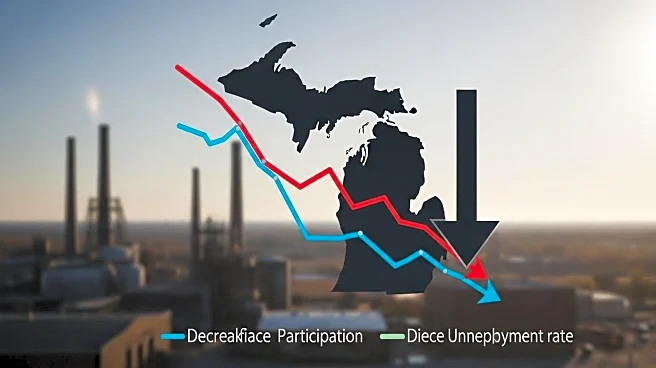What's Happening?
Michigan's unemployment rate decreased slightly to 5.2% in August, according to the Michigan Department of Technology, Management, and Budget. This decline is attributed not to an increase in employment but rather to a reduction in the number of people actively participating in the workforce. Approximately 14,000 fewer individuals were either employed or seeking employment, marking the fifth consecutive month of workforce contraction. Factors contributing to this trend include an aging population, discouraged job seekers, and high childcare costs. The report highlights the complexity of Michigan's economic situation, as the national jobs report also indicated a lag in employment growth.
Why It's Important?
The reduction in workforce participation, despite a lower unemployment rate, raises concerns about the state's economic health. A shrinking labor force can signal underlying issues such as economic discouragement or structural barriers to employment. This trend could impact Michigan's economic growth and stability, affecting businesses and public policy. The situation reflects broader national challenges, as the U.S. also reported job losses for the first time in five years. Stakeholders, including policymakers and business leaders, must address these issues to ensure sustainable economic development.
What's Next?
Future data releases will provide a more comprehensive picture of Michigan's employment landscape. Policymakers may need to consider interventions to encourage workforce participation, such as addressing childcare costs and providing support for job seekers. The ongoing analysis of state and federal employment data will be crucial in shaping economic strategies.











